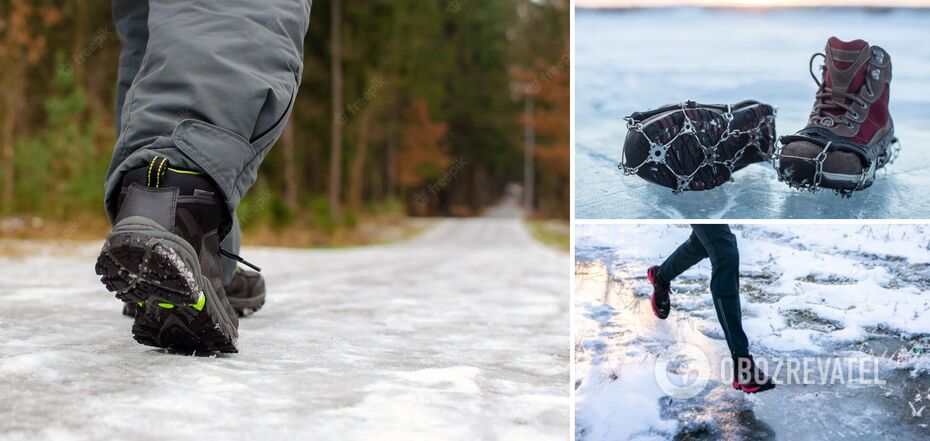Life
How to keep your shoe soles from slipping on ice: simple life hacks
In the coming days, weather forecasters predict freezing rain for Ukraine. This weather is also popularly known as ass-fall, because, fortunately, people are more likely to fall on their heels because of the ice on the paths. However, the risk of landing on an arm or leg, or even hitting your head and getting injured in such conditions is far from zero.
OBOZREVATEL asked about ways to protect yourself from falling during icy conditions. Today we'll talk about how to make your shoes non-slip.
Adhesive plaster
A fabric adhesive plaster glued to the sole can protect you from icy conditions for 2-3 days. It should be glued to a dry and clean sole in strips of 3-5 cm crosswise. The downside is that this method won't work in wet weather.
Felt
For such protection, you can take an old felted item and cut it into small pieces. The resulting fragments should be glued to a dry and clean sole around the perimeter and wait until they are completely dry. Felt will last up to 2 weeks, but only in dry weather conditions. This protection is powerless against moisture.
Glue with sand
Glue can be applied to the sole and on its own for protection. The main thing is to draw complex patterns - like on the tread of a winter tire or hiking boots. To enhance the anti-slip properties, you can sprinkle sand on the glue before it dries. This protection will wear off in about a week or two.
Sandpaper
A less durable method is to glue the sole, as in the method with felt. It is also not suitable for slush and will last for a maximum of two weeks. You can also rub the sole with fine sandpaper from time to time. The advantage of this method is that it is quite effective, but the disadvantage is that it is very destructive to the sole material.
Socks
Wearing cotton socks over your shoes is a rather radical way to ruin your style, but at the same time save your limbs without spending too much money and time. It's up to you to decide which is more important.
Tread recesses
Over time, non-slip shoes start to slip on ice because the tread gradually wears off. You can have it deepened at the nearest shoe shop. But the sole must be thick enough for this.
Metal lugs
Special anti-slip heel pads can literally bite into the ice, increasing your stability. They can also be installed by any cobbler. The downside of using them is that they make a loud thud when you walk.
Nails or screws
They work on a similar principle to metal lugs, but they can be installed around the entire perimeter of the sole. In order not to damage the shoes, it is better to have it done by a master.
Polyurethane coating
The most ice-resistant soles are made of polyurethane. However, any other pair can be strengthened with this material. Professional cobblers know how to do this.
Ice shoes
Some brands of winter footwear specially produce studded structures that are inserted into the soles of their models as an element of the construction set. But there are also universal ice shoes that can be attached to any shoe with straps or elastic bands. They are inexpensive, and you can install and remove them yourself.
Earlier, OBOZREVATEL told you how to protect your shoes from leaks in wet weather.



























